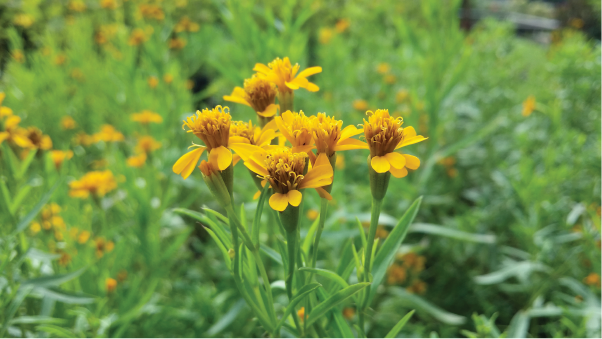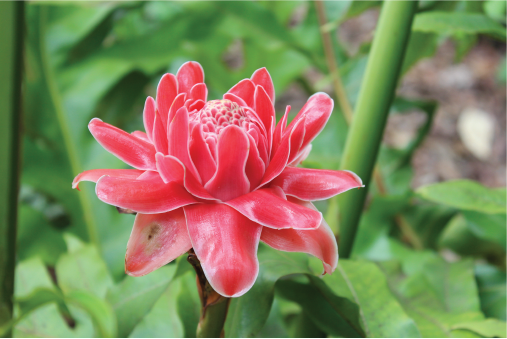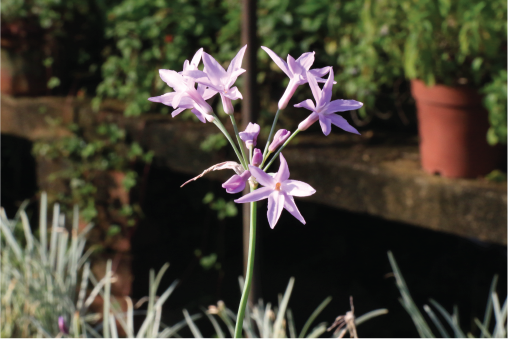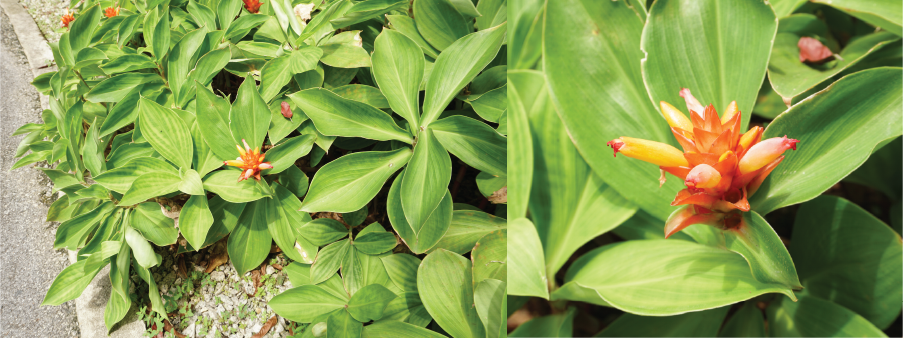Delicious Blooms
Flowers are pretty to look at, but why not add them to your dinner plate?
The use of flowers in culinary dishes is not new. Historical records show that blooms were used to decorate the food for the nobility hundreds of years ago.
Today you don’t need to be royalty to enjoy the taste of flowers. Flowers can be served raw, fresh as a garnish or incorporated into cooked dishes. They not only enhance the nutritional and sensory qualities of food but can also influence people’s perception of the food on your palate.
Before you go on an edible flower spree, here are a few things to bear in mind.
-
Harvested flowers do not last long, so it is best to consume them quickly or refrigerate them to maintain their freshness.
-
Dried or frozen flowers are best used for infusions or cooked in dishes.
-
Consume flowers that have been correctly identified. If in doubt, please do not eat and consult a professional first.
-
Flowers from florists, found by the roadside, waterways or any public space should not be consumed in case of contamination. Consume flowers that are grown responsibly, for instance, free from pesticide, vehicle emissions and effluent runoff.
Here are some edible flowers to add to your diet!
Musa species

(From left) A banana blossom with developing fruits and a close-up on the inflorescence of the Musa × paradisca ‘Praying Hands’.
Musa species or Bananas, are mainly cultivated for their sweet yellow fruit. This tree-like herb can reach between 2 to 9 m tall and produce distinctive large green foliage and flowers. The flowers are clustered in groups, each enclosed in a large reddish bract.
As the inflorescence develops, the bracts fold backward revealing the yellow flowers beneath. Some of the Banana species consumed include Musa acuminata, Musa balbisiana and Musa paradisiaca.
The reddish to purple flower at the end of the cluster is also known as the banana blossom. Though all parts of the blossom are edible, only the core is frequently consumed. In Thailand, the core is added into various dishes like Tom Yum soup, salads and cold dishes. Locals would use the blossom to make Yam Hua Plee or Banana Blossom Salad by slicing up the core, soaking it in lemon juice before tossing with cooked prawns, herbs, coconut milk and dressing. In Indonesia and India, banana blossoms are added into curries or deep fried into chips.
Tagetes lucida

Flowers of Tagetes lucida
Photo credit: Soh Weijing
Tagetes lucida, also known as Mexican Tarragon, is a well-known herb that grows up to 70 cm tall. The Mexican Tarragon produces linear pointed leaves and are free-flowering with small sunflower-like blooms.
While many are familiar with using the leaves of the Mexican Tarragon for seasoning, its flowers are edible too! The bright yellow flowers can be used as an edible garnish, bringing a subtle minty taste to green or fruit salads. In Latin American countries, the flowers and dried leaves are often brewed into an anise-flavoured tea. In Mexico, the deep yellow pigment extracted from the flowers is used to dye fabrics and yarn.
Etlingera elatior

Red inflorescence of the Etlingera elatior
Photo credit: Shi Biying
Etlingera elatior, commonly known as Torch Ginger, is a rhizomatous herb that can reach 6 m in height. The shoots and flowers emerge directly from the rhizome underground. The pink to red inflorescence consists of bracts and flowers which overlap in a spiral forming an oval-shaped head.
The flower head of the Torch Ginger is mainly used in Southeast Asian countries like Singapore, Malaysia and Thailand. The flower is often used as part of condiments, eaten raw or cooked. The aromatic flower buds are a well-known ingredient for the popular local dishes, rojak and laksa. They are also used in Peranakan cuisine, lending a citrusy floral flavour which is often used to counteract the fishy taste in food. In Thailand, the raw buds are sliced finely as part of the salad, Khao Yam.
Tulbaghia violacea

Purple inflorescence of the Tulbaghia violacea
Tulbaghia violacea, also known as Society Garlic, is a perennial herb that grows to 30 cm tall. This herb produces flower clusters that bloom regularly. The greyish green leaves are thin and linear, giving off a scent of garlic when bruised. Similarly, the purple-coloured flowers emit a mild garlic fragrance.
The taste of Society Garlic flowers is described to have an onion-like to peppery taste which make them a popular choice to spice up salads, toasts, and cheese dishes. In the United Kingdom and Australia, the flowers are mixed into compound butter, cream cheese, dips, or used as garnish for soups and salads. The flowers are also added into vinegars and pasta dough to enhance their flavours.
Costus productus

(From left) Growth form and the flower of Costus productus
Costus productus is a free-flowering herbaceous plant that can reach 90 cm tall. Also known as the Orange Tulip Ginger, it produces foliage that grows in a spiral around the stem and stout bright orange inflorescence at the tip of the stem. The inflorescence is made up of overlapping bracts and the flowers emerge from in between.
While the Orange Tulip Ginger is usually regarded as a low growing garden plant, its flowers can be eaten. In fact, many Costus species have edible flowers which are crunchy with a sweet tang reminiscent of ripe cherry tomatoes. The flowers zest up green and fruit salads with their bright colours and have a sweet citrusy flavour, appealing to both the eyes and taste buds.
Mirabilis jalapa

Flowers of Mirabilis jalapa
Photo credit: Shi Biying
The Mirabilis jalapa, also called Four-o-clock, is a perennial herb often grown as an annual. Reaching a height of 1 m, this fast-growing herb produces oval to triangular foliage and trumpet-shaped flowers. The lemon-scented flowers bloom in the late afternoon to early evening which is how its common name, Four-o-clock, came about.
The fresh or dried flowers of the Mirabilis jalapa can be steeped in water to extract a crimson colour pigment. This flower dye is used as food colouring in cakes and jellies as well as a natural dye for textiles like cotton and wool.
Allium tuberosum

White flower head of Allium tuberosum
The Allium tuberosum is a perennial herb measuring up to 45 cm tall. Also known as the Garlic Chives, its leaves are flat, long and linear in shape and pointed. They are often used as a fresh culinary herb. This frequent bloomer has white to cream coloured flower clusters with a round head. They are said to smell like violets.
Just like its leaves, the flowers, stalks and bulbs are a delicious companion to a wide variety of food. The flowers enhance the taste of dishes with a touch of onion-garlic taste in soups, stir-fries and as fillings for dumplings. Its fresh flowers complement egg dishes and boost the visual aesthetic of dishes as a garnish. In Japan, the flower heads are battered and deep fried into tempura, served together with a dipping sauce made up of soy sauce, water, sugar and sweet rice wine.
Gardening with Edibles
The City in Nature vision seeks to bring greenery closer to all residents. The community plays a key role in the ownership and stewardship for nature which will benefit our health and well-being.
NParks is partnering residents to make Singapore our City in Nature and spark a love for community gardening through the Gardening with Edibles initiative launched in June 2020. Under this programme, some 400,000 free seed packets have been distributed to interested members of the public.
Another round of 400,000 seed packs are now available under the programme. Each household is entitled to one free seed pack and you can register your interest at www.go.gov.sg/seed-pack-registration or you can also call our NParks helpline dedicated to the registration of seed packs at 64991099. Relevant resources are also available online, to guide gardeners along the way.
This brings the total number of seed packets distributed under the Gardening with Edibles programme since its launch in June 2020 to some 860,000, complemented with a slew of free online resources and workshops catering to different skill levels. The programme is also aligned with Singapore’s national strategy to strengthen our food resilience and reach the “30 by 30” goal led by the Singapore Food Agency. The Gardening with Edibles programme was established with the support of founding partners DBS Bank and Tote Board, as well as the Garden City Fund, a registered charity established by NParks. This round of seed packet distribution is made possible by the programme’s partner Singapore Post Limited, through the Garden City Fund.
Gardeners’ Day Out
Participate from the comfort of your home with online activities such as talks and demonstrations, video tutorials of activities and promotions offered. Enjoy Gardeners’ Day Out online at www.nparks.gov.sg/GDO.
You can also enjoy videos of our Gardening With Edibles Masterclass Series. They are conducted by NParks horticulturists, focusing on unique and challenging edibles across different plant families.
Learning More
If you are a gardening newbie, visit NParksSG, our refreshed YouTube Channel that serves as a one-stop repository for close to 300 video resources. It covers topics ranging from types of soil needed for your garden and how to plant, harvest and even cook your edibles.
For more information about the flora and fauna found in Singapore, please visit Flora and Fauna Web.
If you like what you read, follow us on Facebook, Instagram and Telegram to get the latest updates.
Text by Low Wei Teng
About the writer
Low Wei Teng is a Horticulture Outreach and Heritage Trees manager with the NParks Horticulture and Community Gardening division. She and her team manage the NParks Flora and Fauna Web information portal to showcase and provide information on the plants found in Singapore’s landscape. She was also part of the editorial team for the recently published plant reference guide, 1001 Garden Plants in Singapore: A New Compendium.





Have views or comments on this article? Let us know via this form. If you would like to give us feedback on any other areas relating to our parks and gardens, please submit via https://www.nparks.gov.sg/feedback